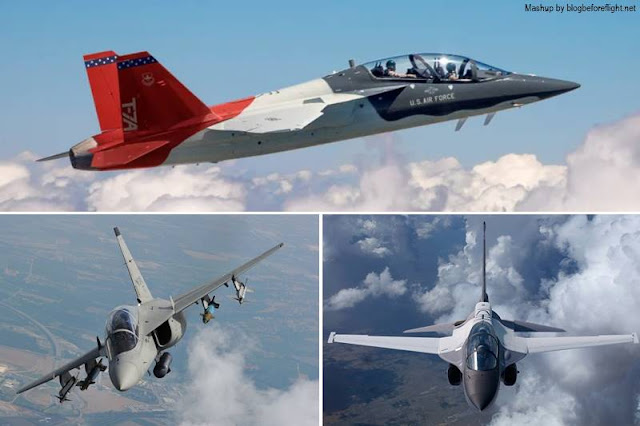US Air Force is looking for over 100 Advanced Tactical Trainer aircraft
 |
| Main candidates for future USAF Advanced Tactical Trainer (ATT). |
The US Air Force (USAF) released a Request for Information (RFI) on Tuesday in order to conduct market research to identify companies that may possess the expertise, capabilities and experience to design, develop, manufacture, integrate and maintain of an Advanced Tactical Trainer (ATT) to be used and integrated as a key tool for Future Fighter Pilot Training. The Service is considering an initial quantity of at least 100 aircraft with subsequent increases in batches of 50 aircraft.
Although the USAF has pointed out that this RFI is not currently connected to any type of business, this research could in the future turn into further work for Boeing, with the sale of additional T-7A Red Hawks, but also for the companies that have lost the TX program, such as Leonardo and Lockheed Martin/KAI.
The M-346 and T-50A advanced trainer and light combat aircraft both boast all the capabilities required by the RFI and may have a good chance of competing for a possible future order. The USAF is looking at two-seat aircraft, with options to use the rear seat area for other mission gear, and be able to replicate current and future fighter aircraft systems by providing an integrated training environment to build transferable skills, systems management skills and decision-making skills for the use of weapons. The jet must have a large cockpit display and an attachment point on each wing to carry at least one Air Combat Maneuvering Instrumentation pod or a Combat Air Training Missile. The hardpoints also have to be able to carry an external fuel tank or an electronic attack or countermeasures pod or other future pods. Endurance is to be 90 minutes, of which 30 minutes would be tactical maneuvering. The jet is to have a ceiling of at least 45,000 feet and have a structural instantaneous G of 7.5, plus a sustained 6G maneuver.
The USAF is also interested in capability to use a helmet-mounted display system, onboard power sufficient to power wing stations and electronic countermeasures pods, and an infrared sensor. It has a preference for an airplane with an automatic ground collision avoidance system (GCAS) and a zero-zero ejection seat, as well as an engineering analysis or option for aerial refueling and an infrared search and track system (IRST), among other nice-to-have features.
Additionally, the USAF wants a smart chair simulation-like device that can provide a virtual reality for ground-based flight practice.
It is not clear why the USAF is considering a new aircraft that appears to be very similar to the T-7A, probably because Boeing has not yet developed the attack variant of its new trainer jet.
Written by Matteo Sanzani
Source: US Federal Government





No comments
All comments related to the contents of our articles are welcome. It is not allowed to post promotional messages, links to external sites, or references to activities not related to this blog.